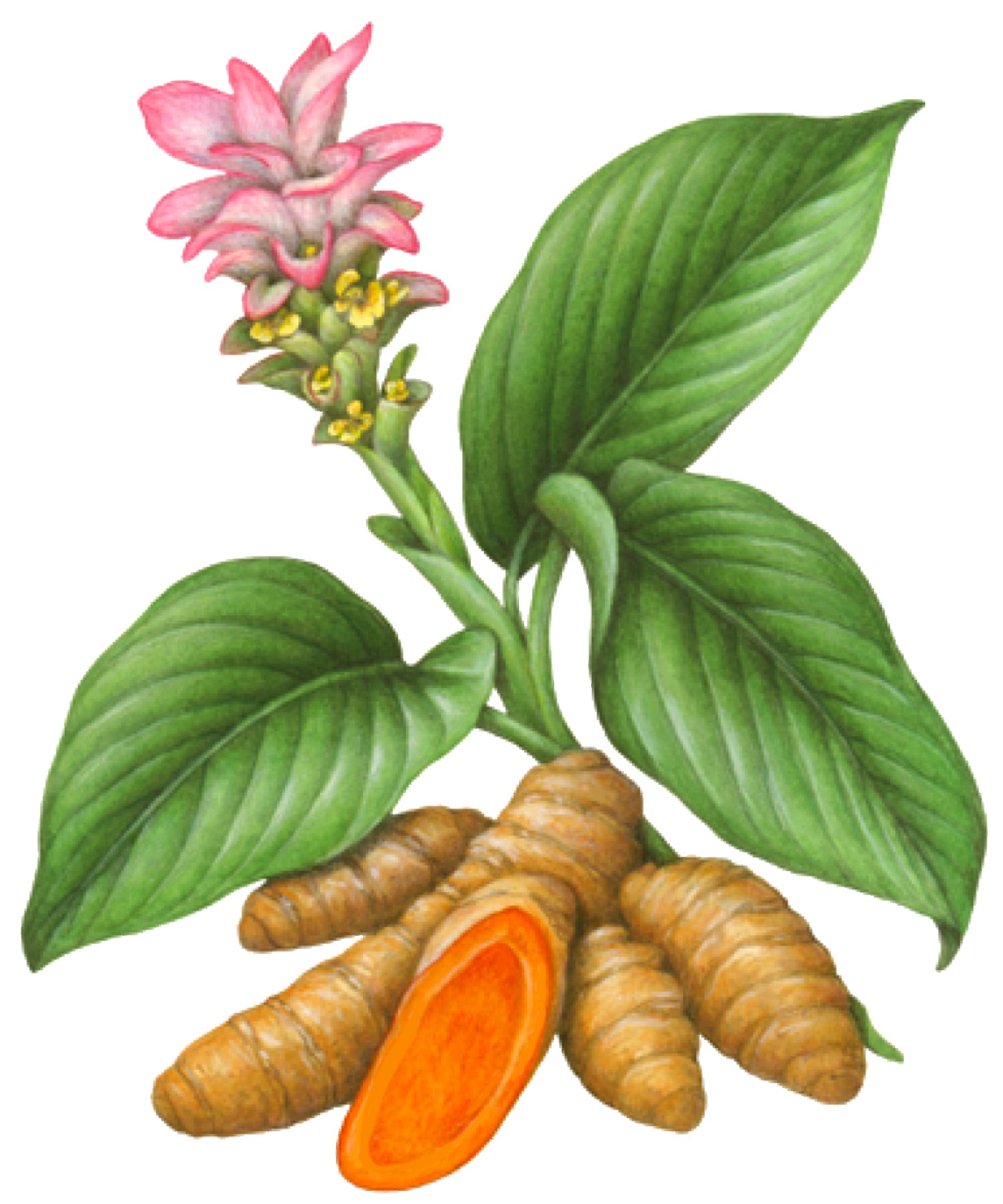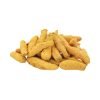


Can we find something as a substitute for saffron? Yes! It’s Turmeric. Turmeric, a rhizomatous perennial herbaceous plant is belonging to the ginger family and native to Southeast Asia. Because of its brilliant orange-yellow colour, turmeric is also known as the supreme replacement for saffron. So turmeric can bring a dish to life with its vibrant orange-yellow colour, pungent flavour and mildly aromatic scent taking the lead among the other saffron alternatives such as Cardamom, Safflower, Annatto and Marigold flowers. Saffron is the most expensive spice in the world and fortunately, the best saffron substitute is much less expensive: turmeric.



Turmeric is ranked on the top of the list when paired with other spices and used primarily in Asian cuisines. It is a primary component of curry powders and some mustards. When cooking with ground turmeric powder, the recommended amount is 11⁄2 teaspoons per day. Turmeric is more of a natural food pigment than a curry spice. 1⁄4 teaspoons of ground turmeric powder can add a nice golden yellow colour to one portion of food. When large families are staying together, turmeric powder would be made in bulk and stored by just following 5 step process: Wash – Boil – Dry – Grind – Store.
Turmeric is ranked on the top of the list when paired with other spices and used primarily in Asian cuisines. It is a primary component of curry powders and some mustards. When cooking with ground turmeric powder, the recommended amount is 11⁄2 teaspoons per day. Turmeric is more of a natural food pigment than a curry spice. 1⁄4 teaspoons of ground turmeric powder can add a nice golden yellow colour to one portion of food. When large families are staying together, turmeric powder would be made in bulk and stored by just following 5 step process: Wash – Boil – Dry – Grind – Store.
Turmeric contains bioactive compounds with medicinal properties and maybe the most effective nutritional supplement in existence. It is a staple in Ayurveda, Siddha medicine, traditional Chinese medicine and Unani. It was first used as a dye, and later for its medicinal properties. Many of these benefits come from its most biologically active compound, curcuminoids. The most important one is curcumin. It is proven to have powerful anti-inflammatory, immune-boosting, antioxidant, antibacterial, antineoplastic, anti-proliferative and antimicrobial effects.
At Indian weddings, brides apply a turmeric paste from head-to-toe to reveal a radiant glow. Many women in Tamil Nadu still apply turmeric on the whole body daily before taking bath. Taken orally, turmeric can cleanse the face, help in any bacterial infection on the skin, reduce facial hair growth, reduce acne, improve complexion and treat pigmentation disorders. Antioxidants and anti-inflammatory components in turmeric may provide glow and lustre to the skin. When using turmeric, you need to be careful because it may cause irritation, redness, and swelling if you’re allergic to the spice in food. Test turmeric on your inner elbow dabbing a small amount and leaving it to dry to see if you react before using it on your face.
Turmeric is used during religious functions in India and is considered very pious in Hindu tradition. Turmeric is associated with fertility and prosperity. So in Hinduism, it is used during the Haldi ceremony at their weddings. A thick paste of turmeric is applied to the bride and groom’s face and body by their family members. In Hindu worship ceremonies, turmeric water is offered to the gods in the temples as part of a Hindu ritual.
There are several varieties of turmeric and they are not specially identified. They are namely, Gunter, Puna and Madurasi Majal, Duggirala, Tekurpeta, Sugandham, Amalapuram, Erode local, Alleppey, Muvattupuzha, and Lakadong. In Sri Lanka, the ‘Erode local’ variety is the best and more popular.
In Sri Lanka, the mid-country produces most of its turmeric. Turmeric is grown in wet and intermediate zones of the mid-country. Major growing districts in Sri Lanka are Kurunegala, Gampaha, Kalutara, Kandy Matale and Ampara.
Turmeric can be grown in diverse tropical conditions not exceeding the altitude of 1500m at a temperature range of 20-30°C with an annual rainfall of 1500 mm or more. However, turmeric can be grown in the dry zone under irrigation. Turmeric cultivation is blessed during March and April while minor season lies between September to October.
Though many soil types are suitable, well-drained sandy clay loam soils rich with organic matter and sandy loam are the most suitable soil types.

It is the root of the turmeric plant, more bioavailable(ability to have an active effect when introduced into the body), can be used in a variety of ways such as turmeric tea, soups, smoothies, juices, salads and many more.

It is the powder form of turmeric, very common and easy to find, easier and better to use in your favourite recipes or take in supplement form.
Still, scientists don’t fully understand the role of turmeric in treating depression. But, it makes a promise as an effective antidepressant. Depression is associated with lower levels of BDNF – Brain-Derived Neurotrophic Factor. ( BDNF is a protein produced by our body with the job of maintaining and repairing neurons). Turmeric can boost levels of BDNF.
Researchers have found that the turmeric compound could boost the memory and mood of middle-aged or older adults. In memory tests, people taking curcumin twice daily shows a 28 per cent improvement while those who took the placebo showed no significant memory improvements and also experienced slight improvements in mood, unlike those who took the placebo.
Curcumin in turmeric can help fight chronic inflammation preventing and helping treat some health conditions and diseases such as heart disease, cancer, metabolic syndrome, Alzheimer’s disease, various generative conditions. However, very high doses of curcumin are required for these results.
Long-term joint pain can affect a normal way of life. Curcumin relieves Arthritis(osteoarthritis and rheumatoid arthritis) and joint pain and reduces swelling by blocking inflammatory cytokines and enzymes.
Curcumin has been found to affect cancer growth and development. It contributes to the death of cancerous cells, reduces the growth of new blood vessels in tumours, and reduce the spread of cancer.
A recent study suggests that turmeric may benefit heart health. The antioxidant property of curcumin found in turmeric has the power to prevent heart failure by improving the function of the lining of your blood vessels.
Curcumin promotes weight loss and burns belly fat by reducing fat tissue growth, curbing weight regain, and enhancing the sensitivity to the hormone insulin.
High doses of curcumin may cause mild side effects in some people. The most common side effects observed are digestive issues, diarrhoea, headache, nausea, vomiting, stomach ache and skin rash. However, curcumin consumption is generally considered safe.
There are some official guidelines for the intake of curcumin. The Joint FAO/WHO Expert Committee on Food Additives recommends taking 3 mg per kilogram of body weight per day.
There are some other alternative options for saffron, but turmeric is the supreme replacement for saffron and it’s easy to find at your local grocery store. If you are looking for a less expensive food pigment, turmeric is your best option!
Copyright © 2024. All Rights Reserved.
Powered by Olutek Digital Solutions